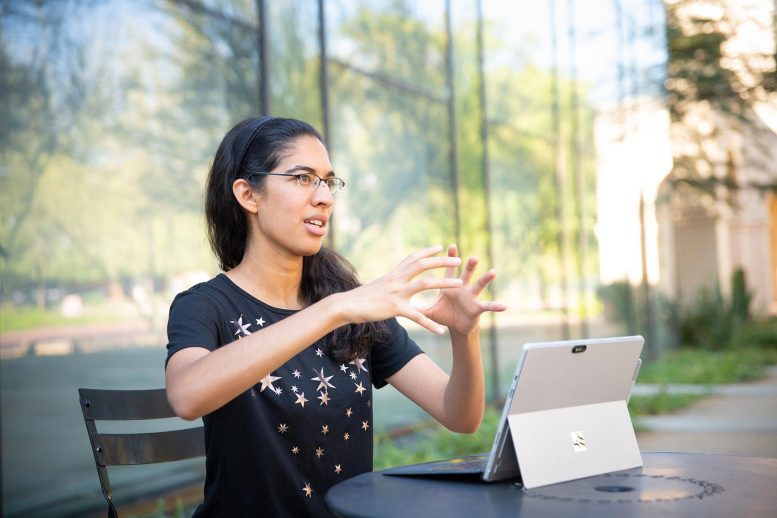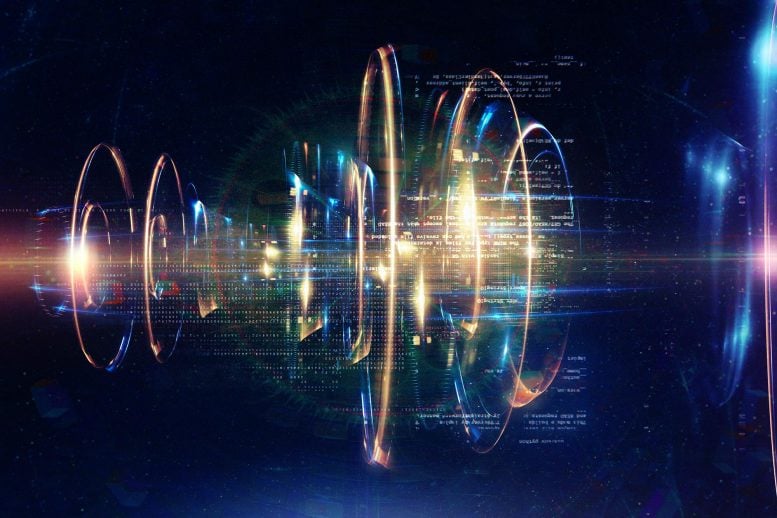
The partnership could lead to pioneering
“Most people know of the company Amazon. We can do a lot of shopping there, but it’s also a powerhouse in engineering,” says Fernando Brandão, Bren Professor of Theoretical Physics at Caltech and head of quantum algorithms at AWS. “Amazon Web Services is the biggest cloud provider on Earth today. They are thinking about how they can make computing simpler and better for people who use AWS. And they’re also thinking about the next step, and how to do computing and cloud computing in the next five or 10 years.”
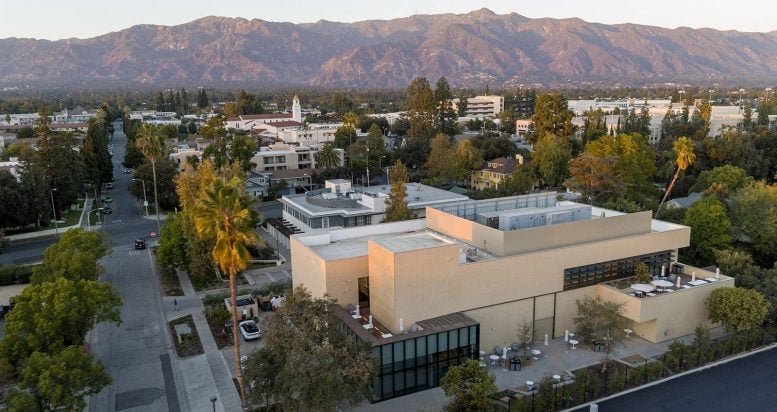
The AWS Center for Quantum Computing at Caltech. Credit: Amazon Web Services
The collaboration will help bridge the commercial side of quantum computing with the fundamental research taking place at Caltech, which has a long history of breakthroughs in the quantum sciences.
“AWS will benefit from the ideas percolating here on campus,” says Oskar Painter (MS ’95, PhD ’01), John G. Braun Professor of Applied Physics and Physics at Caltech and head of quantum hardware at AWS. Painter says quantum computing is still a very young technology, so it is crucial for development efforts to be directly connected to the latest research in academia.
“If we were to just take today’s ideas and go forward with them, we would create a dinosaur of a quantum computer,” Painter says. “We need to be closely connected and tied into these basic research efforts.”
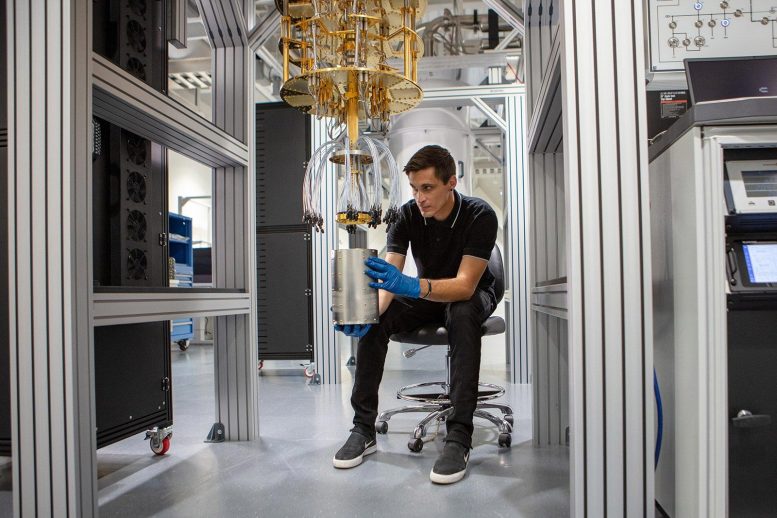
An AWS quantum hardware engineer works on a dilution refrigerator. Dilution refrigerators have multiple temperature stages to cool the quantum processor to temperatures colder than outer space. Credit: Amazon Web Services
This is the first corporate-partnership building on the Caltech campus, and it reflects Caltech’s interests in bringing fundamental science to the marketplace. Through scholarships, internships, and seminars, the center will also support Caltech students and early career scientists.
“Students will have the opportunity to interact with cutting-edge research by way of the center being located at Caltech. This will be pretty amazing for students,” says Painter. “And AWS can tap into that talent. Those are the future engineers and scientists who are going to build quantum computers.”
Scaling Up
One of the biggest challenges in building quantum computers is scaling them up. Because the technology behind the computers is so complex, current prototypes are still in experimental stages. For quantum computers to truly exceed what can be done with today’s classical computers—a milestone referred to as quantum advantage—they will need to be much larger.
For instance, today’s rudimentary quantum computers work on only a few dozen qubits—the quantum equivalent of bits, or the 1’s and 0’s that make up the language of classical computers. Researchers want to build quantum computers with thousands of qubits and more.
“Classical computers have billions and even trillions of bits, and that’s where we eventually would want to be with qubits,” says Brandão.
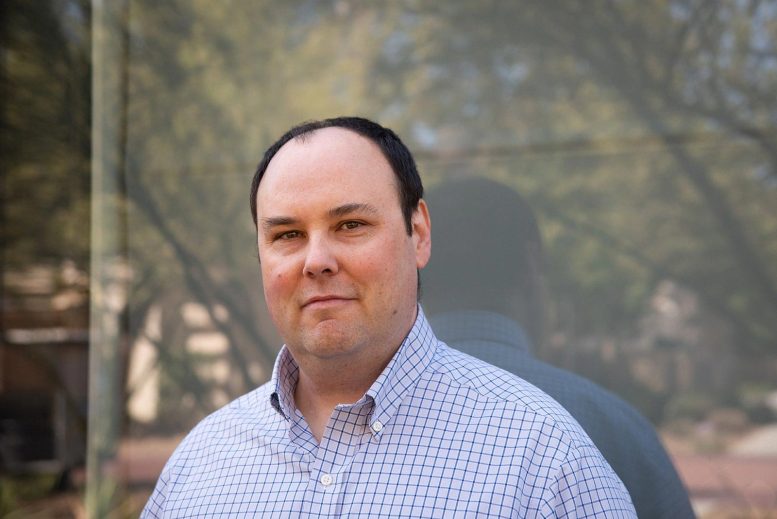
Oskar Painter, John G. Braun Professor of Applied Physics and Physics at Caltech and head of quantum hardware at AWS. Credit: Caltech
Painter says even though some media reports have suggested quantum computers are around the corner, the technology is still in its infancy. “We can do small problems now with quantum computers but we need to scale up the technology by many orders of magnitude before we can truly tackle problems with a big impact. Figuring out what problems are best solved with quantum computers is also an active area of research. There’s excitement because we are starting to be able to control large-scale quantum systems, but we don’t have all the answers yet.”
Unlike bits, qubits can exist in a quantum state known as superposition where they are both a 1 and 0 at the same time, and all the possible states in between. (In Erwin Schrödinger’s famous superposition analogy, a cat can be both dead and alive at the same time, but the cat can also be in any combination, or superposition, of those two states.)
With Power Comes Fragility
The ability of qubits to take on multiple states at once is what gives quantum computers the potential to be exponentially more powerful than classical computers for certain types of problems, including those in chemistry, finance, cryptography, and more. But that power comes with drawbacks. Qubits are very fragile; any slight perturbations, such as vibrations or heat, can nudge them out of superposition, a phenomenon known as decoherence. The key to building successful quantum computers of the future lies in controlling these errors.
“Transistors in our modern computers experience extremely low error rates at the level of one error per billion billion operations, enabling complex computations to be performed,” says Painter. “Quantum computers as of now are limited by error rates at the level of approximately one error in every thousand operations.”
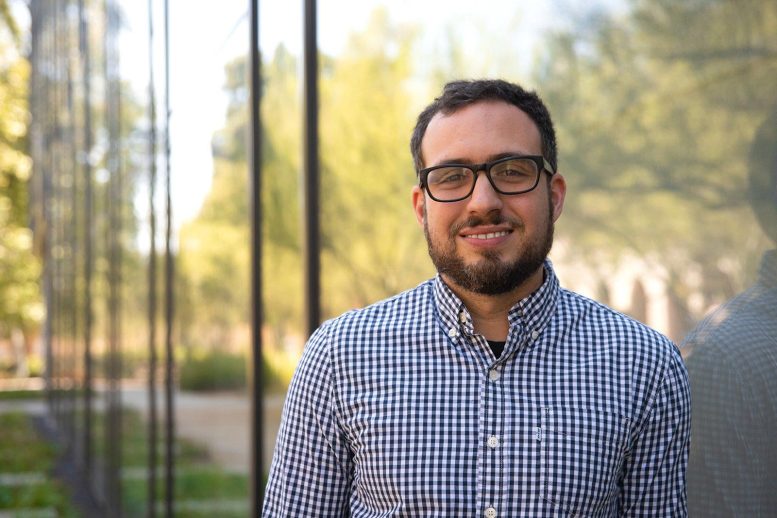
Fernando Brandão, Bren Professor of Theoretical Physics at Caltech and head of quantum algorithms at AWS. Credit: Caltech
A primary goal of AWS is to create a computer architecture that builds quantum error correction into the hardware. The AWS hardware relies on superconducting qubits, which operate at ultra-cold temperatures slightly above Quantum Roots
Caltech is well suited as a hub of quantum innovation thanks to its rich history in the field. The late Richard Feynman, a longtime Caltech physics professor, was one of the first to propose quantum computers. In a 1981 lecture, he famously explained that there are limits to simulating systems in physics with classical computers because “nature isn’t classical, dammit, and if you want to make a simulation of nature, you’d better make it quantum mechanical, and by golly, it’s a wonderful problem because it doesn’t look so easy.” Annika Dugad, Caltech graduate student. Credit: Caltech In 1994, Caltech alumnus Peter Shor (BS ’81), then at Bell Labs, developed a quantum algorithm that can factor large numbers in very short periods of time, demonstrating the enormous power of the future technology. For instance, a quantum computer would be able to factor a 2,048-digit number in eight hours, whereas this would take a classical computer about 300 trillion years. “When I heard about this, I was awestruck,” recalled Amazon scholar John Preskill, the Richard P. Feynman Professor of Theoretical Physics and the director of the Institute for Quantum Science and Technology (IQIM), in a 2013 Caltech article. Shor also helped pioneer the development of quantum error-correction codes. Caltech’s Jeff Kimble, the William L. Valentine Professor of Physics, Emeritus, was among the first, in 1998, to achieve quantum teleportation, whereby information was sent from one light beam to another via entanglement, a process in which particles are connected without being in direct contact with each other. In 2008, he and his colleagues were also the first to store entangled quantum states in a memory device. “I came to Caltech as a graduate student to study with people like Jeff Kimble, who was measuring small 